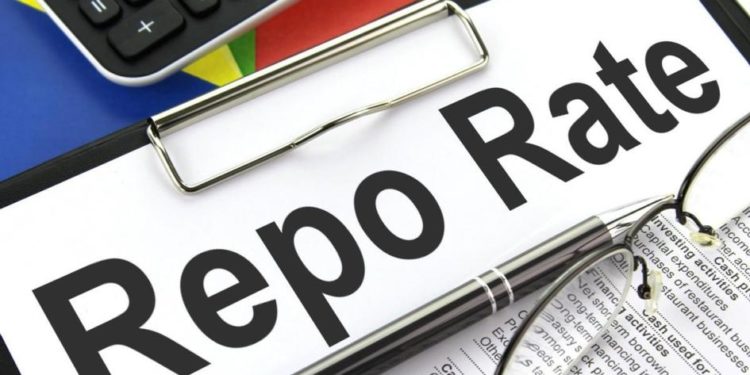The banking economy in India is vast and consists of various components that require a sheer understanding of a basic financial structure. Therefore, it is necessary to comprehend the basis of the current repo rate and models associated with it to understand the difference between repo rate and reverse repo rate.
What is the repo rate?
The repo rate meaning can summed up by stating the rate at which the Reserve Bank of India (the central banking system of any other country) lends monetary funds to commercial banks whenever there is any scarcity of funds. Hence, this repo rate has a significant impact on controlling inflation by the financial authorities of any country.
During inflation, central banks increase this repo rate subsequently and vice versa. Some other reasons for an increase in repo rate include geopolitical tensions, an increase in the price of crude oil, etc.
In simpler terms, the concept of repo rate is brought up when commercial banks face any scarcity of enough funds. Commercial banks avail of single-day loans from the Reserve Bank of India by exchanging central bank authorised securities to meet this shortage. The rate at which commercial banks borrow these funds is called repurchasing option or repo rate. According to RBI, the Monetary Policy Committee increases the current repo rate by 40 basis points to 4.40 %.
What is the reverse repo rate?
There are some situations when a central bank borrows money from commercial banks in the country. Mostly, to control the liquidity in an economy and keep parity between demand and supply of money, the Reserve Bank in India opts for borrowing funds from commercial banks. A reverse repo rate is a rate at which commercial banks lend money to a country’s central bank.
Currently, the Governor of RBI declared the reverse repo rate in India to be 3.35%. Generally, the increase in reverse repo rate indicates that commercial banks will enjoy substantially more incentives from the RBI and reduce the money supply in the economy.
Difference between repo rate and reverse repo rate
Apart from the generic meaning of repo rate and reverse repo rate, there are other factors based on which the difference between repo rate and reverse repo rate can be established.
- The repo rate is higher than the reverse repo rate, where the current repo rate is 4.40%, and the reverse repo rate is 3.35%.
- In terms of operation, in the repo rate mechanism, the central bank allows funds to commercial banks against the Government securities and bonds, keeping its collateral. Whereas in the reverse repo rate mechanism, the excess funds are deposited by commercial banks to RBI, and they get an interest based on this deposit.
- The repo rate is related to an economy’s inflation, whereas the reverse repo rate is engaged with the liquidity factor in an economy.
- The main purpose of the repo rate mechanism is to cater to the deficiency of funds. In contrast, the borrower’s purpose in reverse repo rate is to lower the monetary supply and enhance the liquidity in the economy.
- If there is an increase in the repo rate, the value of loans borrowed by the commercial banks increases. However, in the case of an increased reverse repo rate, the money supply in the economy decreases.
- If there is a decrease in the repo rate, the value of loans borrowed from RBI becomes cheaper with the lower value of overall funds. Whereas, in the case of a decrease in the reverse repo rate, the supply of money increases with banks lending more funds.
- In the case of repo rate, banks follow the Repurchase agreement. On the other hand, the reverse repo rate is charged based on the Reverse Repurchase Agreement.
Impact of repo rate on home loans in India
Different authorised financial companies have revised their home loan interest rates after announcing an increase in repo rate in India. In addition, the Governor of RBI declared a hike in cash reserve ratio by 50 bps, which will significantly impact the floating rate of home loans. Hence, borrowers whose home loans are sanctioned after 1st October 2019 will experience a change in the interest.In addition to this, borrowers might also encounter a slight hike in the interest rate, impacting their home loan tax benefit eligibility.
For this reason, for individuals looking for home loans to borrow, it is beneficial to use a home loan calculator to check the eligibility and EMI to be payable. Moreover, various reputed lending institutions offer attractive pre-approved offers to ensure seamless loan processing and quick loan amount disbursal. To check the pre-approved offers, individuals can provide their essential contact information.
Hikes in the interest of the current repo rate will have a huge impact on the total acquisition cost for individuals looking to buy homes. This estimated a downfall in the total sales of property and houses. Many financial companies offer housing loans at the market’s best interest rates, packed with other benefits and relaxations to curb this problem.



































































